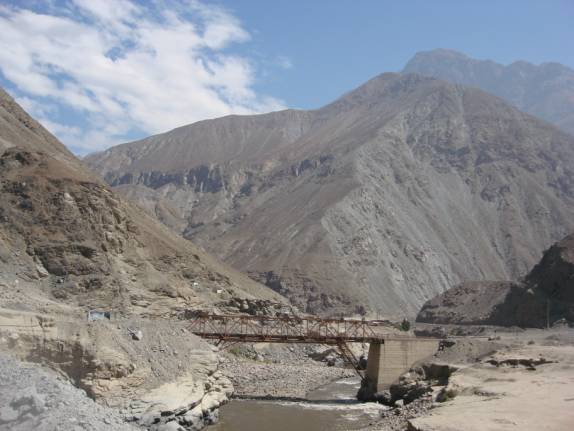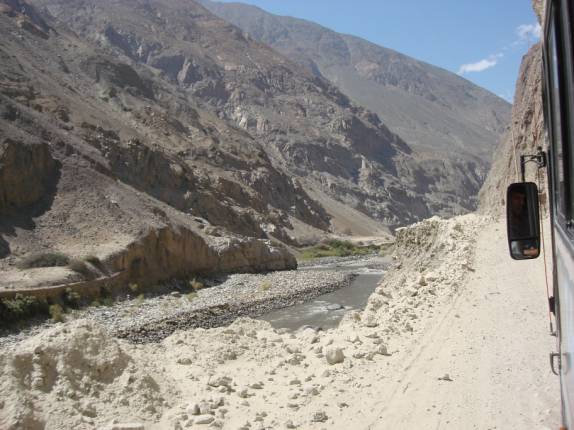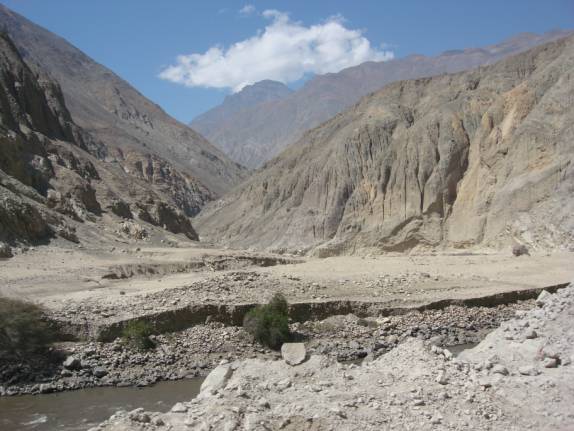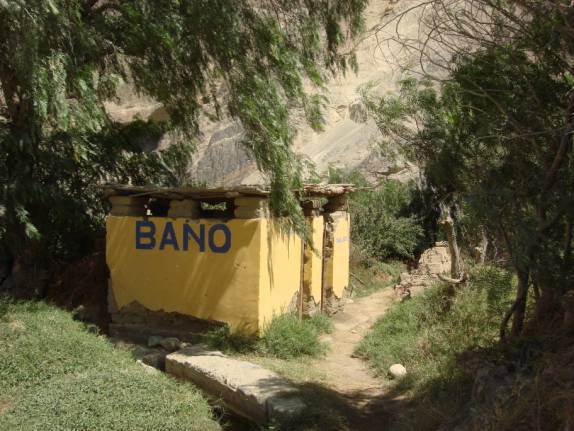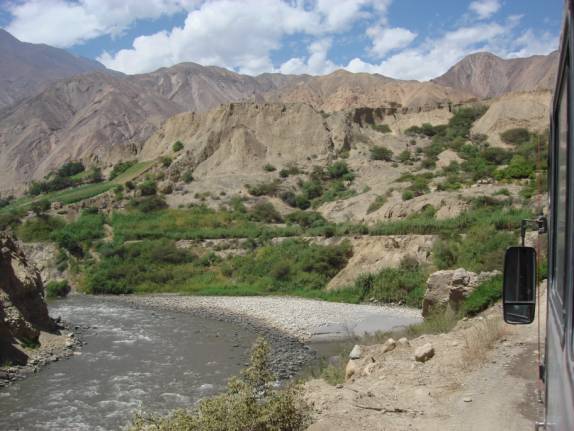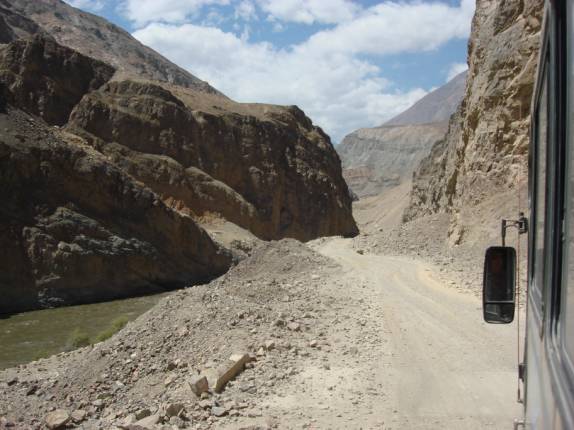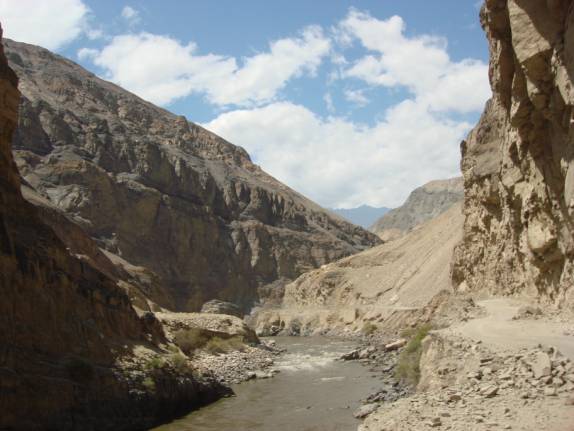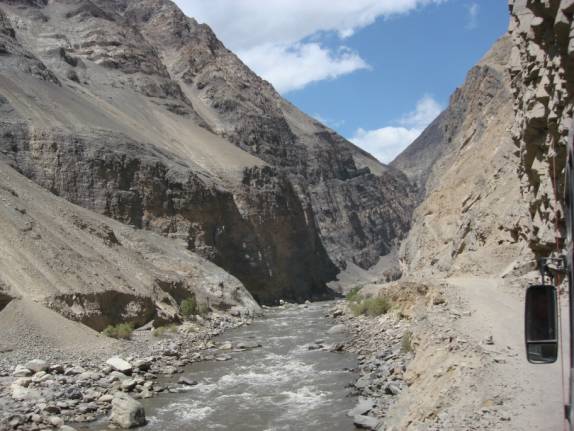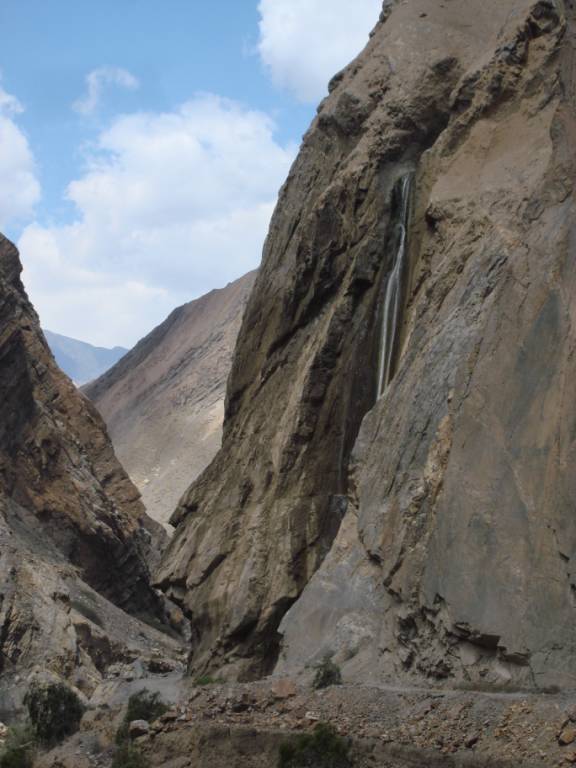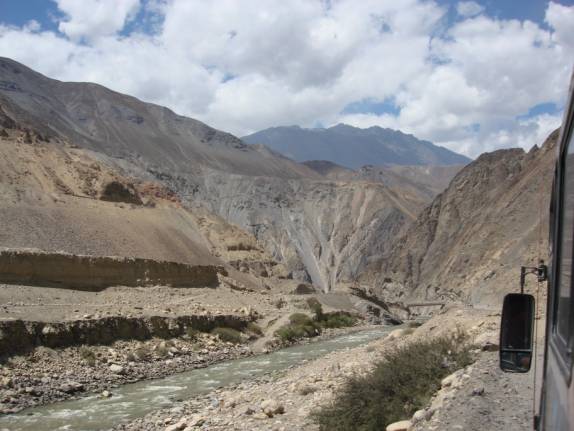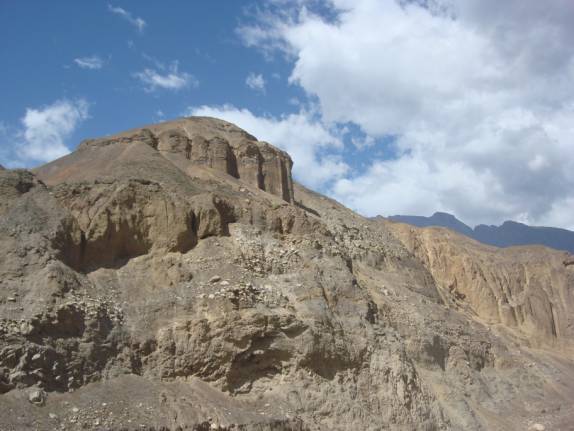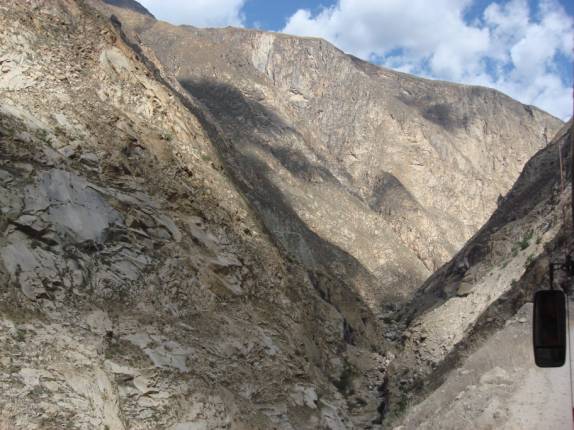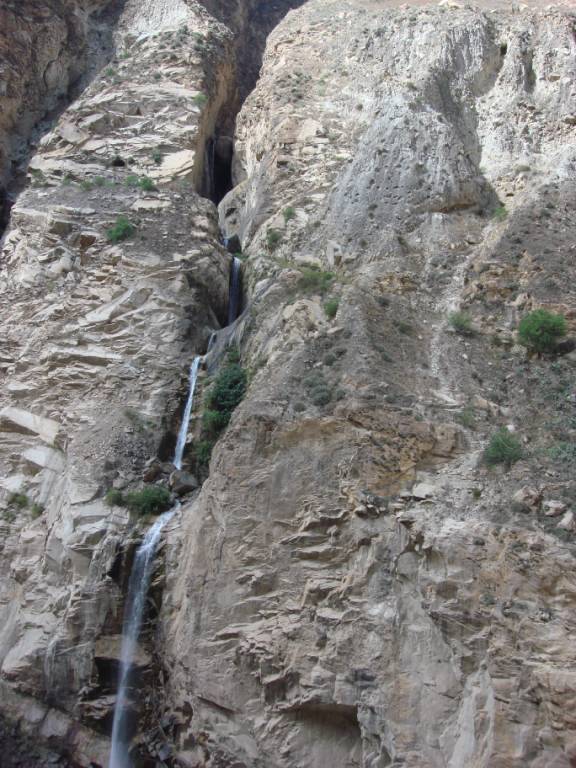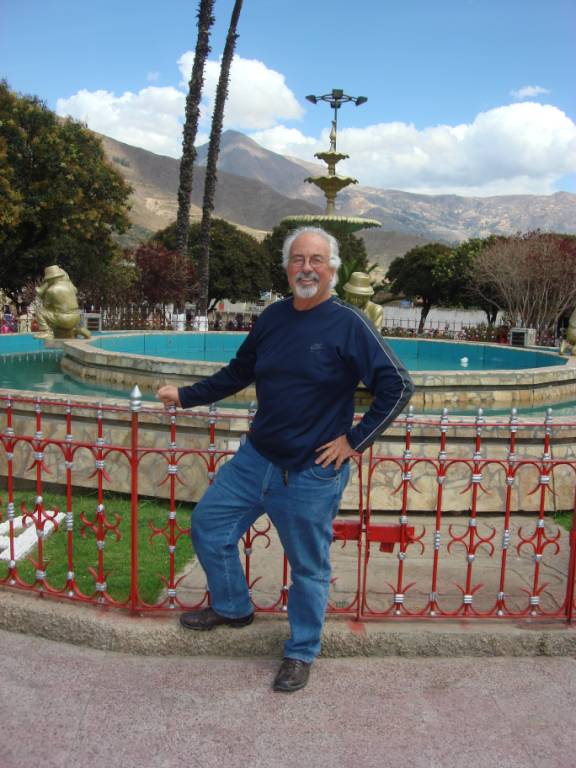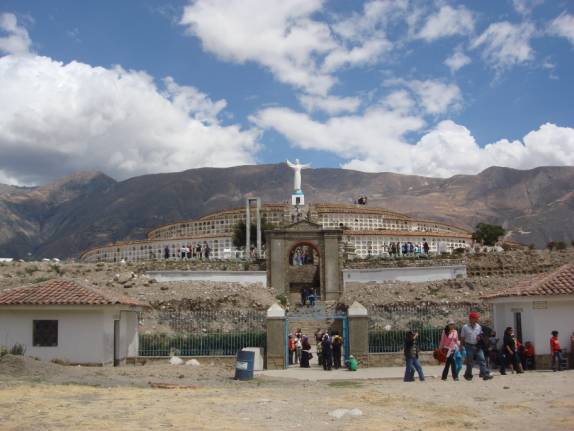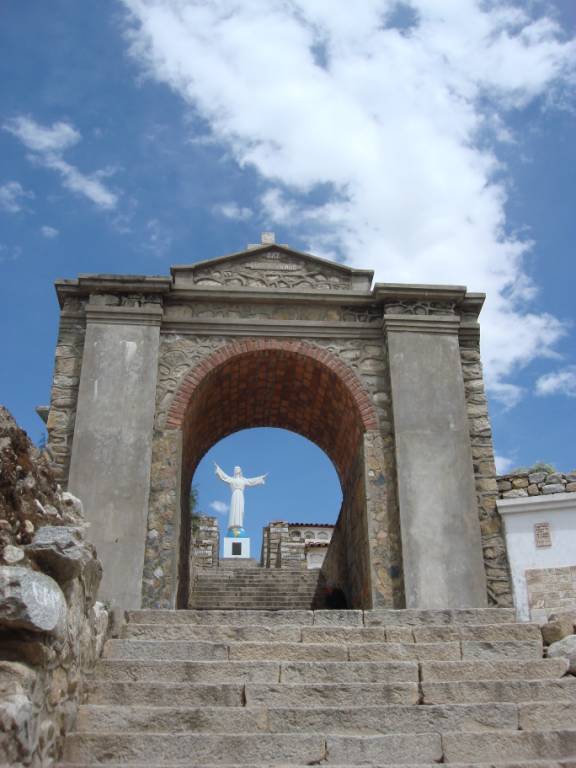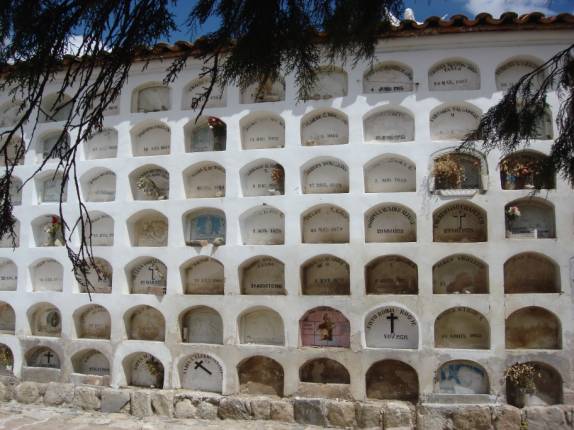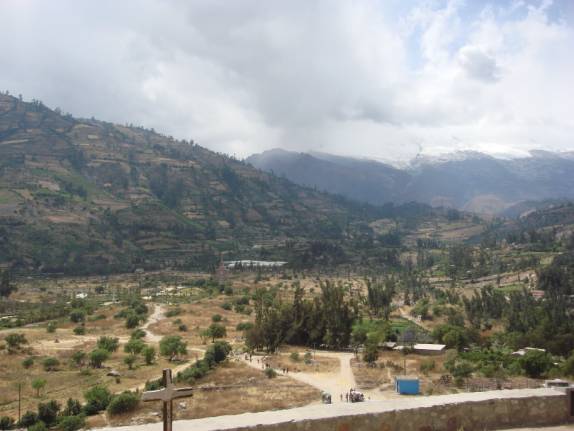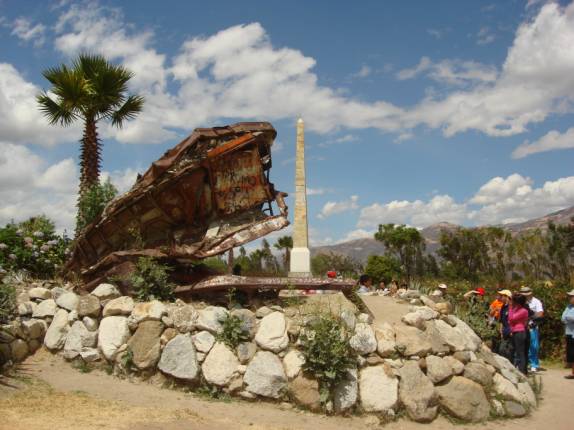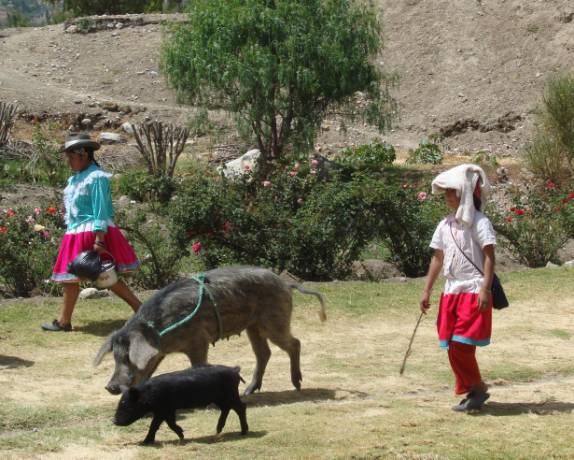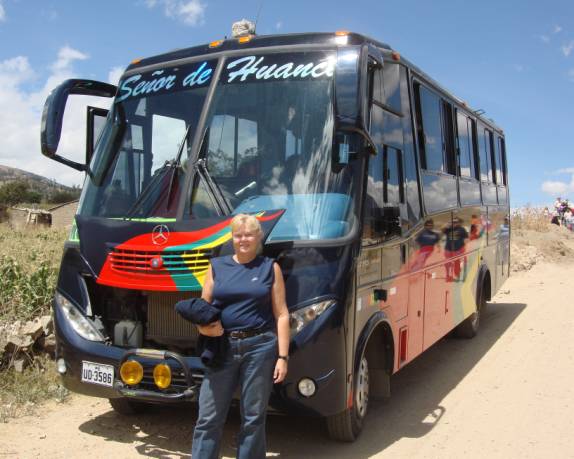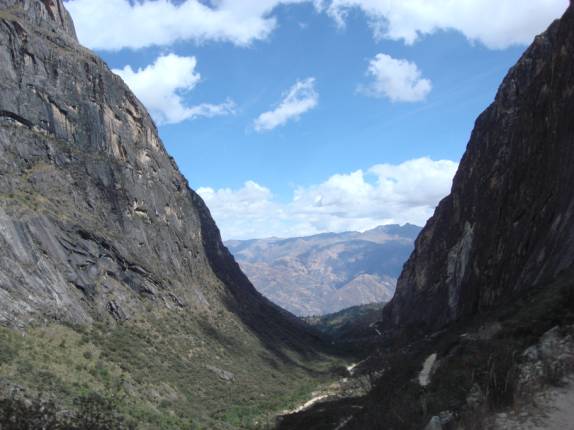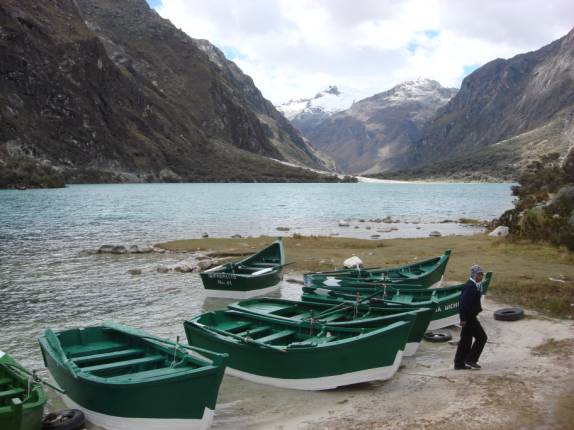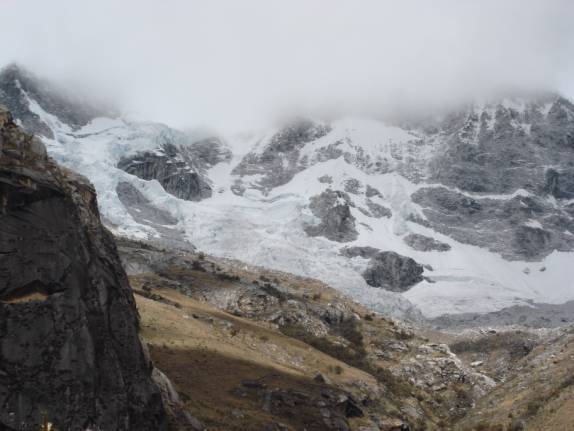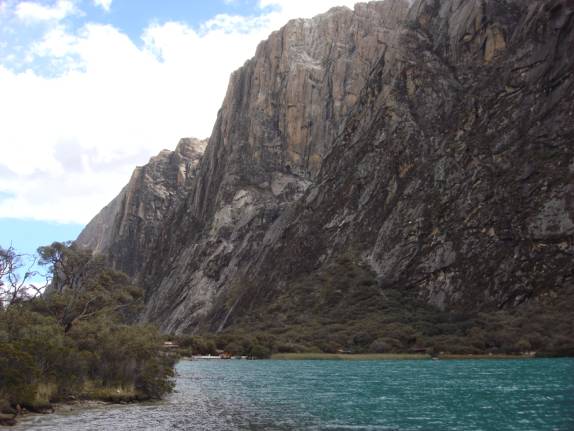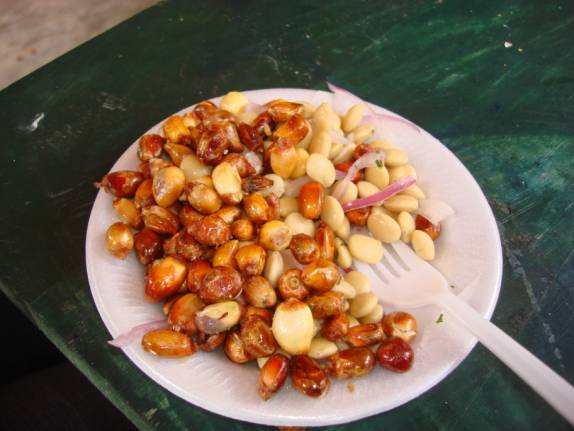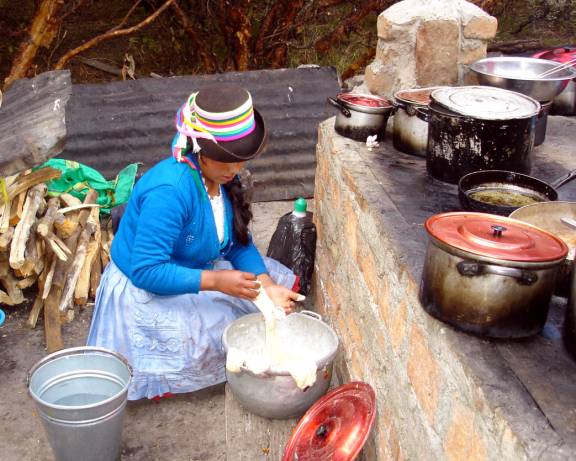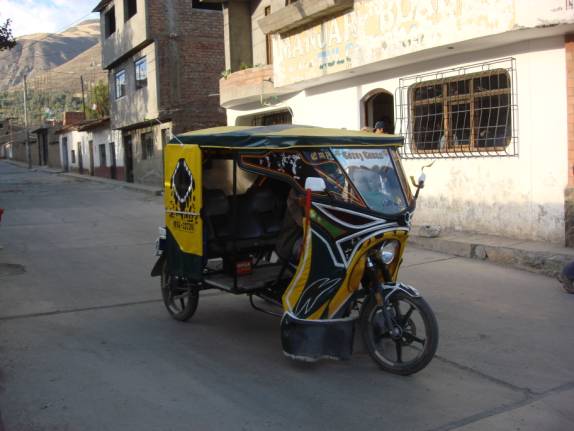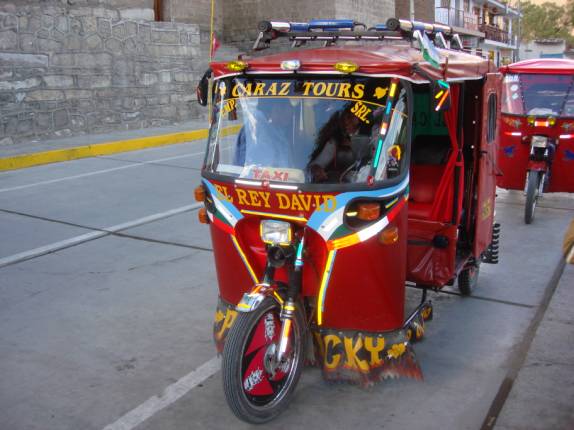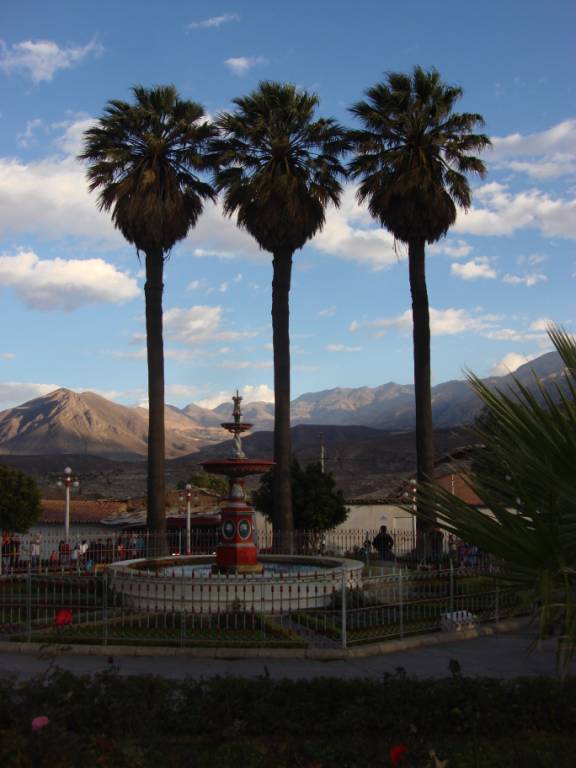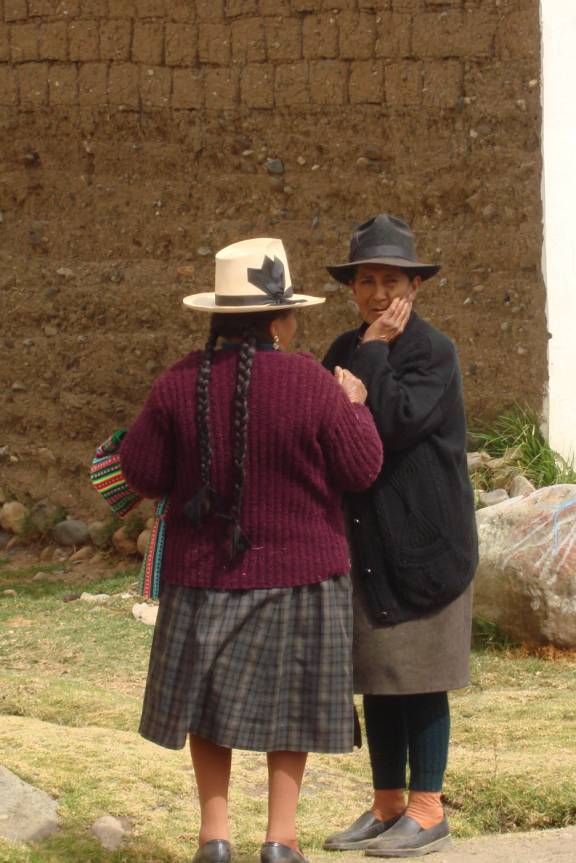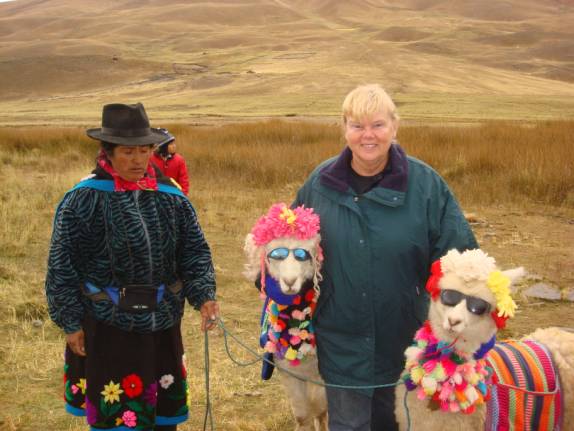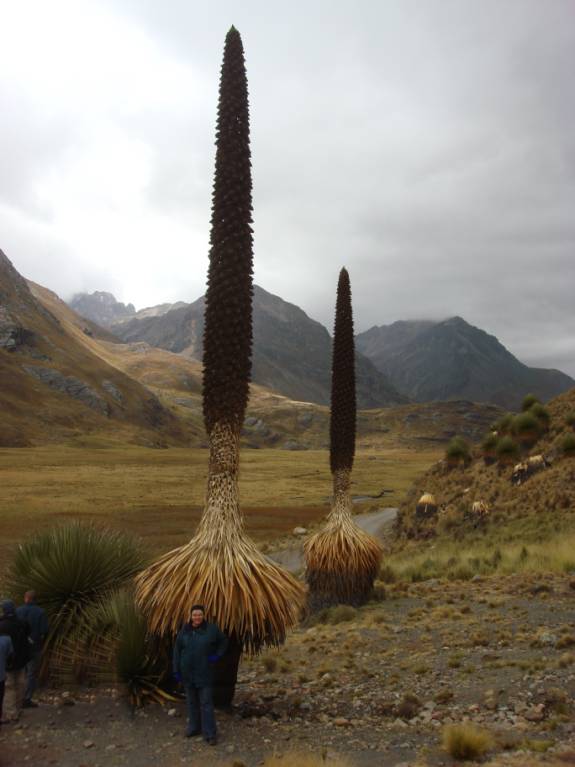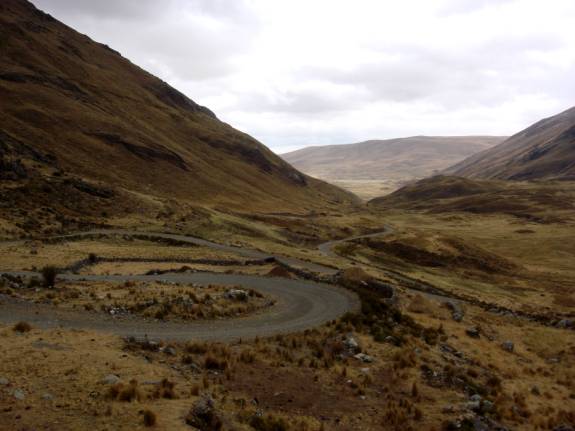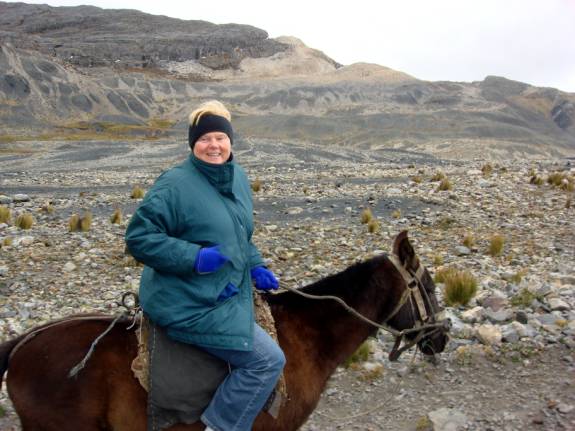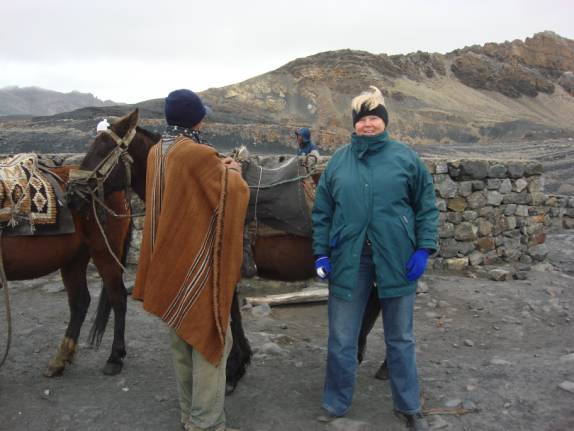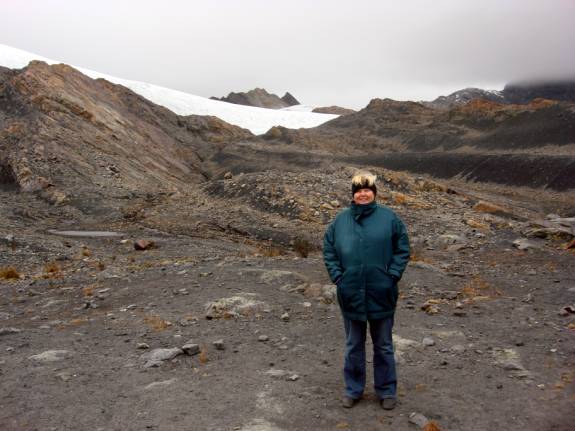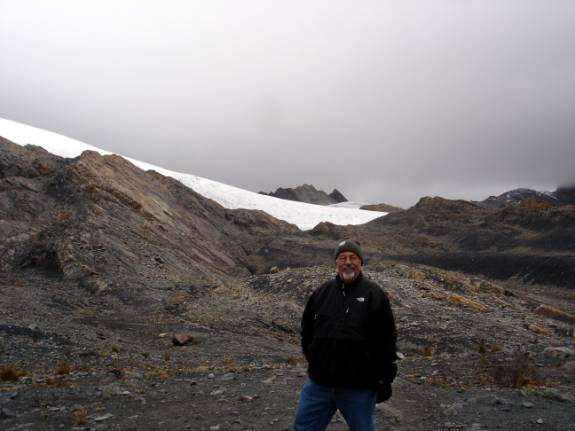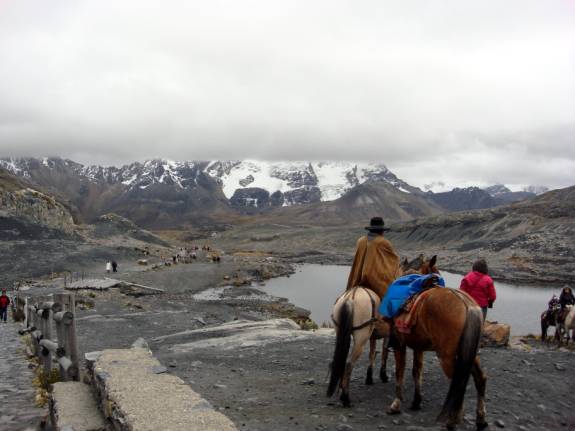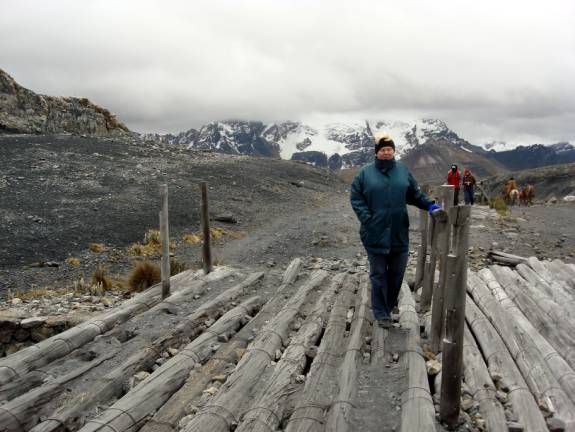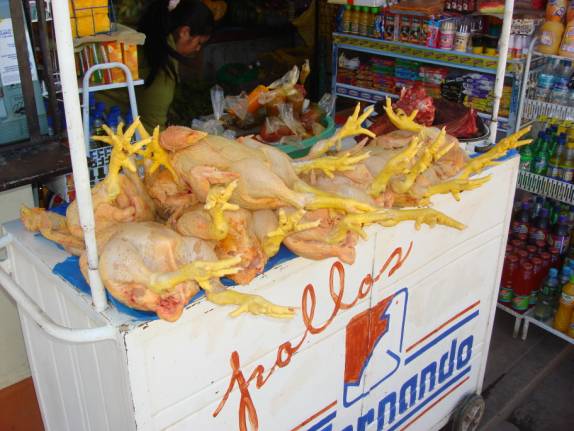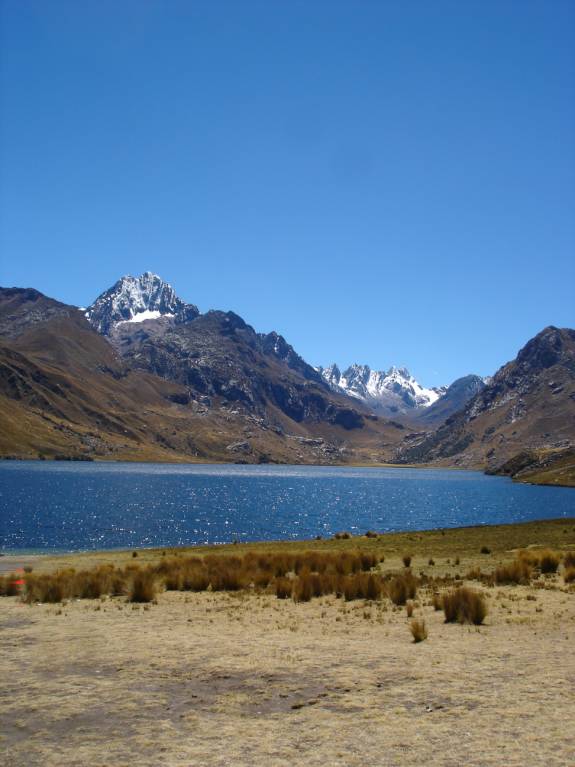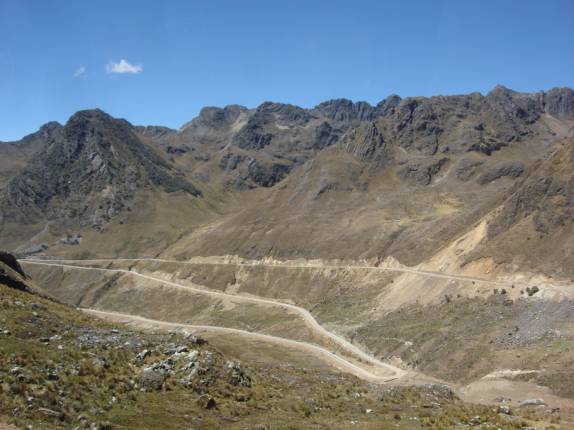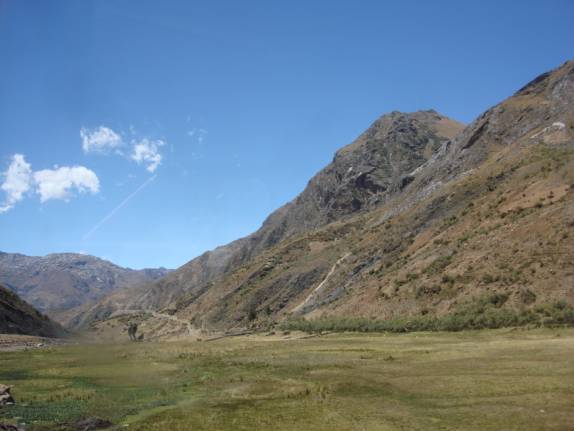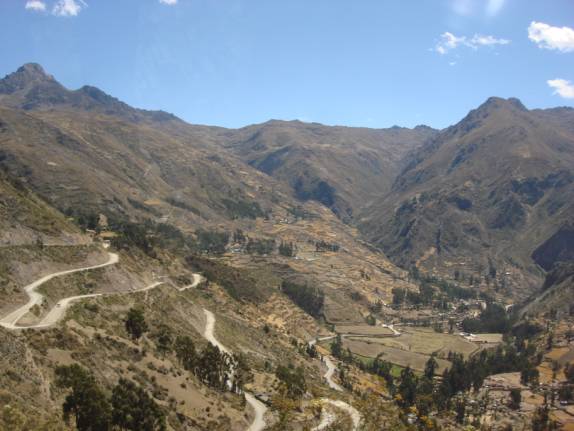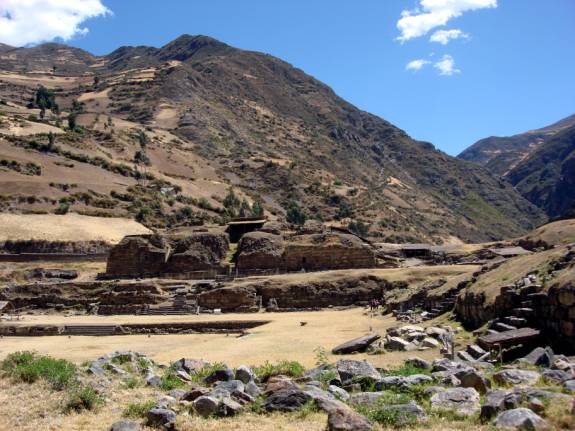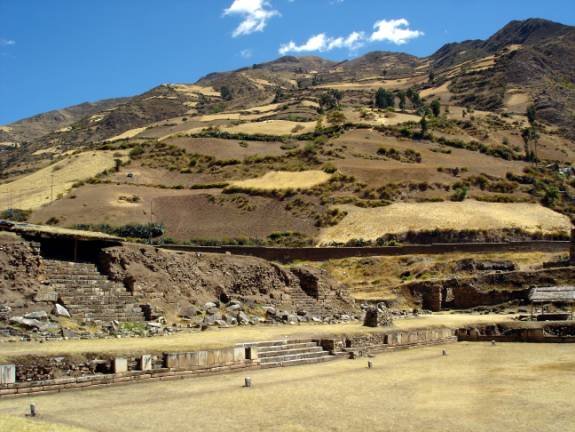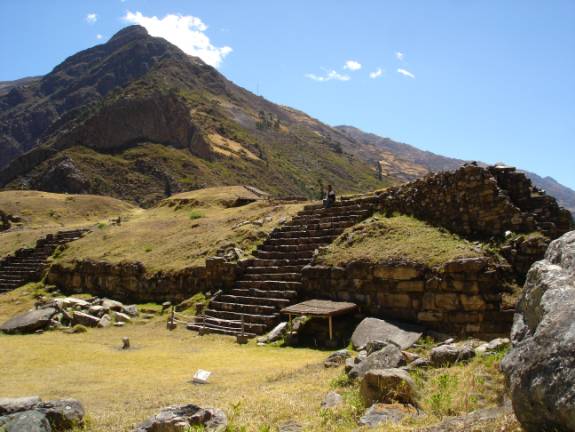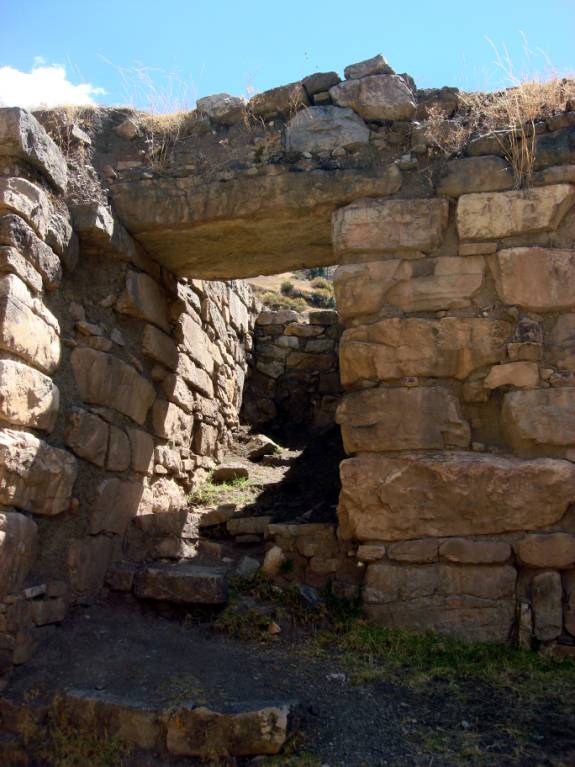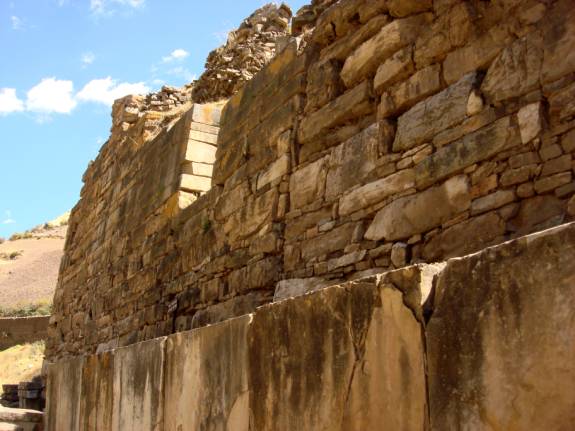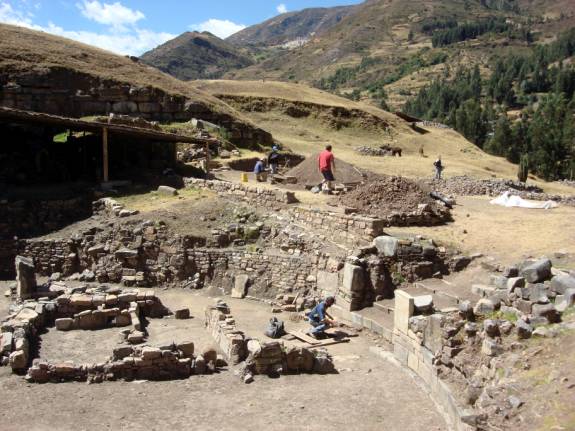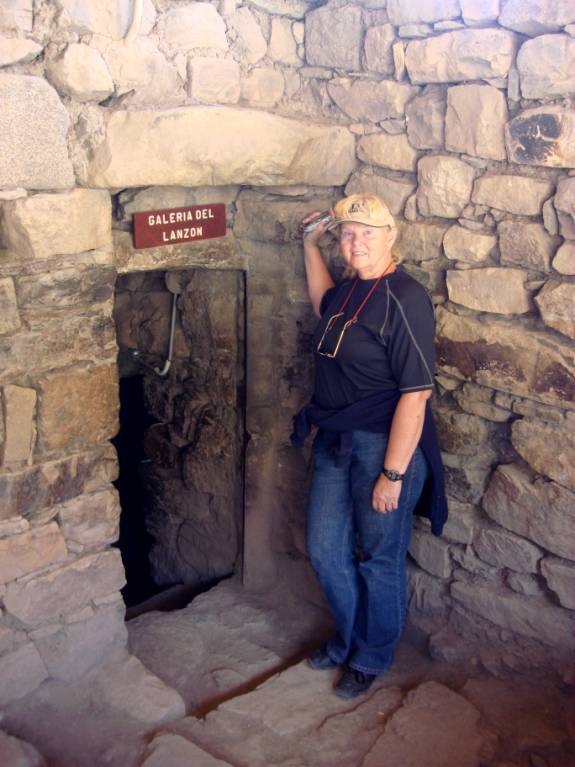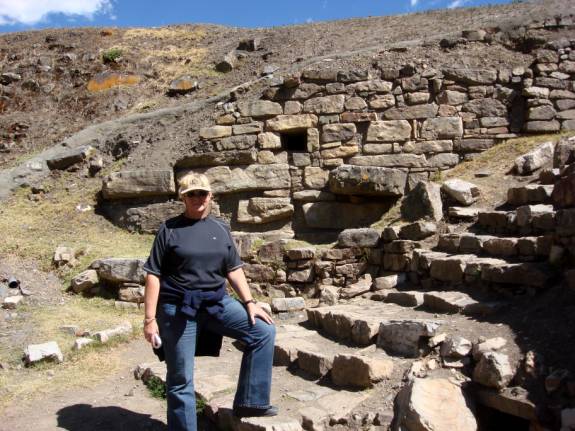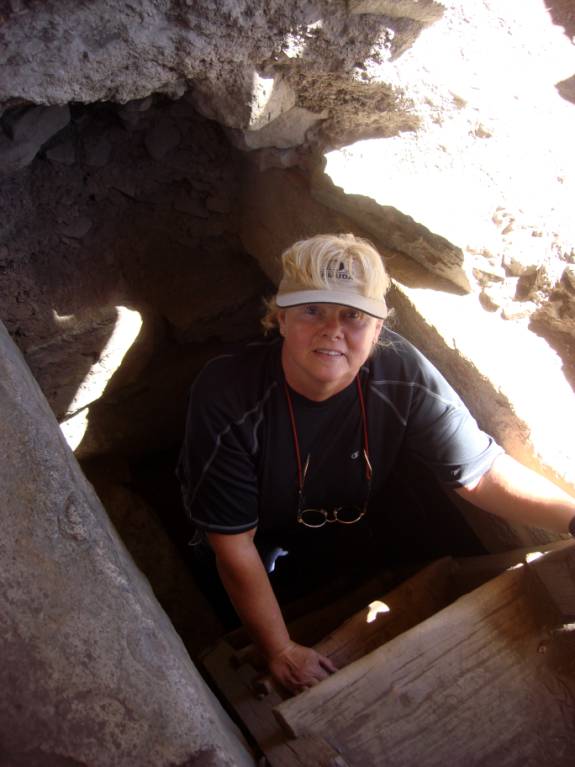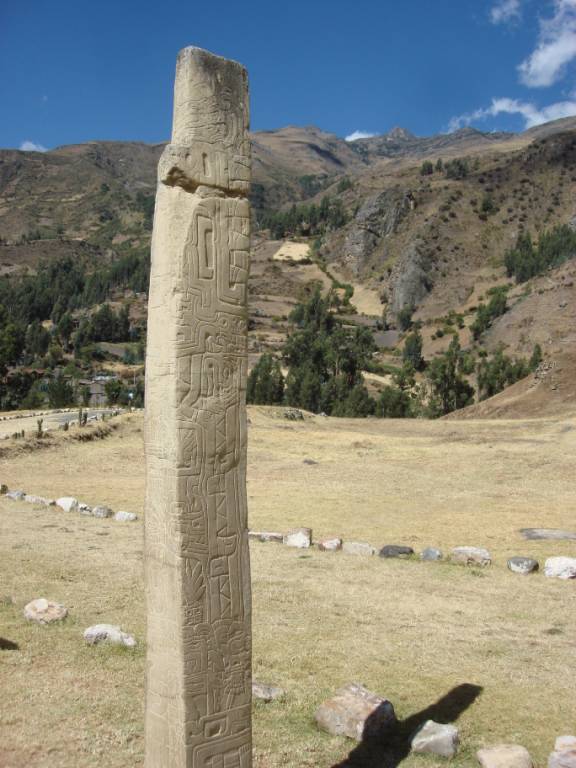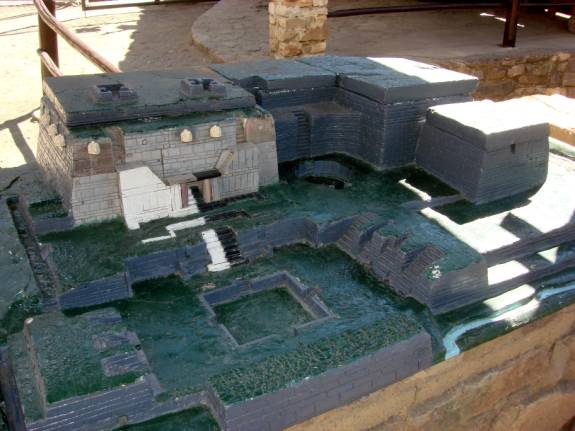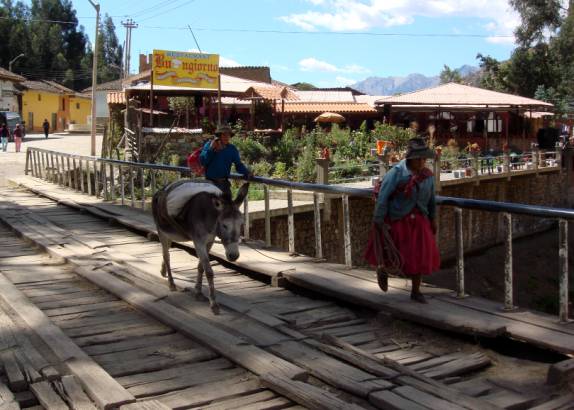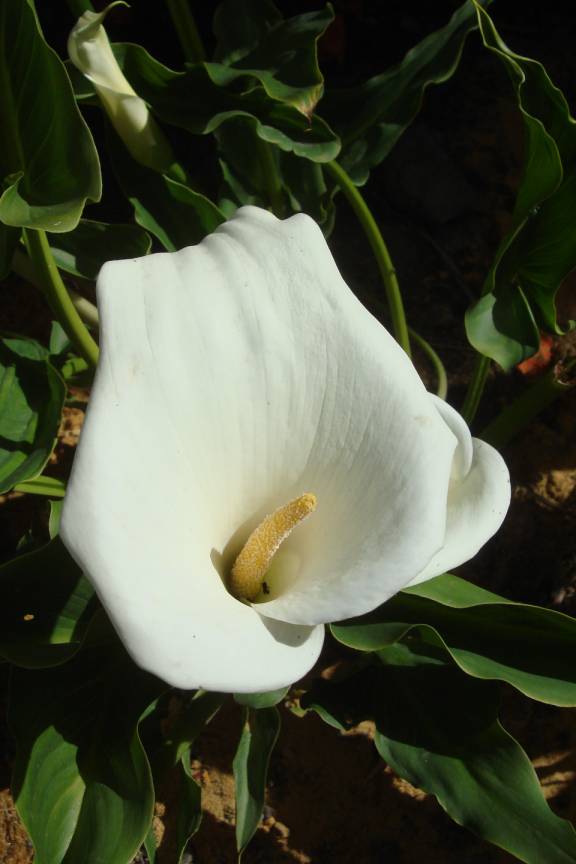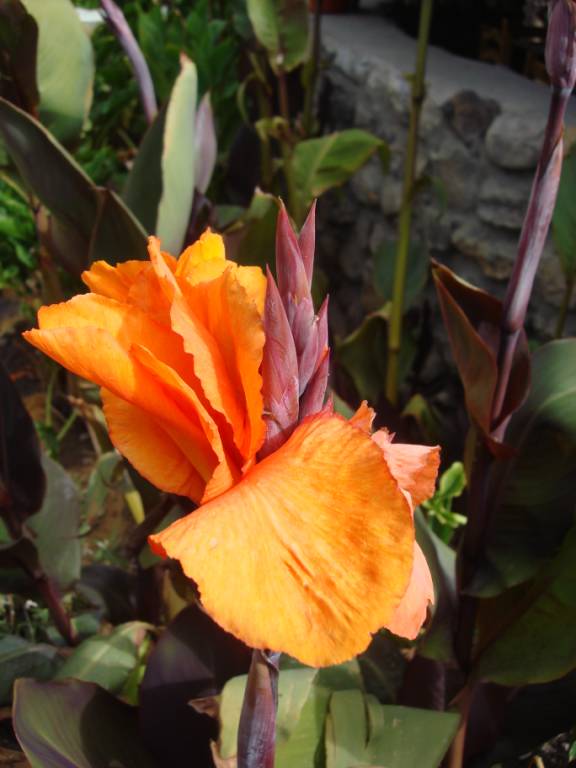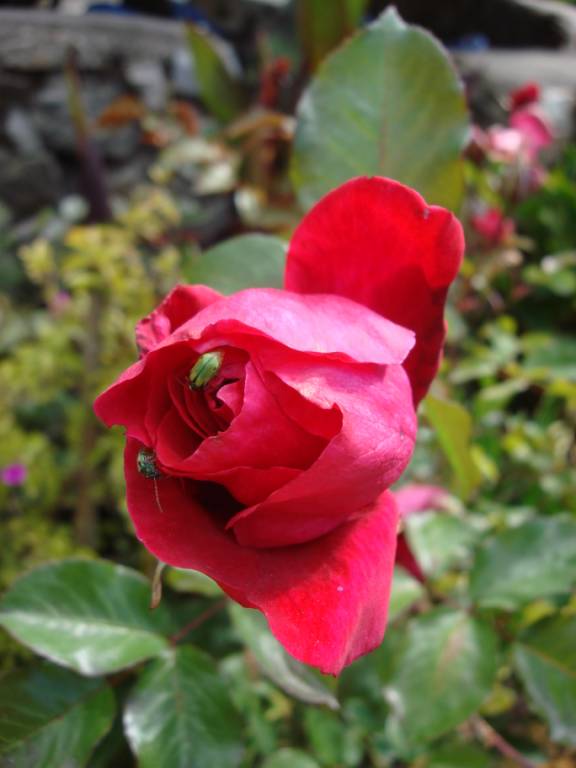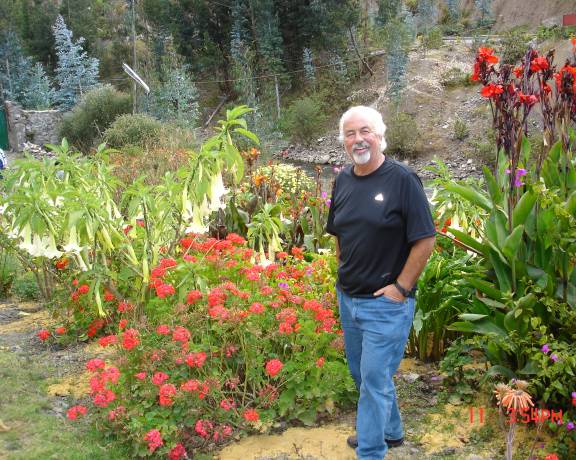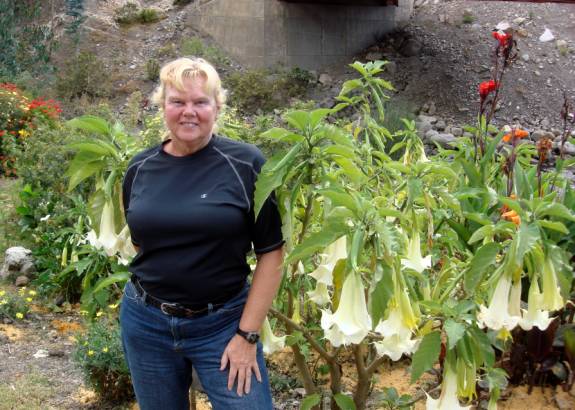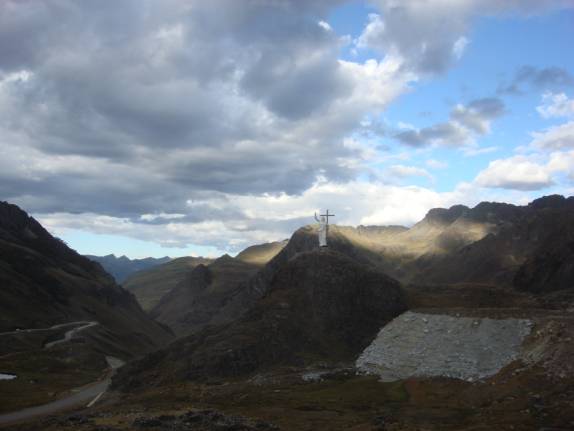|
|
|
|
Site Index:
|
UPDATE#15
08/08
thru 08/11/08
Howdy
Everybody, The
adventures of 2008 from 1/1/08 through 08/07/08 have been published on the
website. We continue with the latest edition. UPDATE
2008 #15 08/08/08 through
08/11/08. At
last update, we were in the first week of our adventure trip to the South
American country of Peru. We had
left Lima and headed north by bus to the coastal city of CHIMBOTE. 08/08/08
FRIDAY CHIMBOTE, PERU to HUARAZ, PERU (via CANON
DEL PATO)
Our morning began at 6:30am. The
hostal did not serve any breakfast so we found a neat restaurant called Las
Flores for coffee and juice. Placing
our bags in a small Daewoo taxi, we headed to the Terminal Terreste.
If you have the taxi drop you just outside the gate of the terminals, you
can save a little because the driver won’t have to pay the terminal fees.
(every little bit helps)
The bus pulled out right about on time at 8:40am.
After asking, we had learned that the left side of the bus would give us
the best views. Our seats 13 and 14
were perfect. Although a little
rough on the exterior, the bus was a really good one and the seats were
comfortable. Once again, the ticket
price was S./30 or about $12 US.
The roadway was dirt and gravel. With
each kilometer, the scenery became more rugged and picturesque.
We had clearly left the coastal plain and entered the canyons of the
Andes Mountains.
Occasionally, the bus would stop at some outpost place enabling a
“pause for the cause”.
The “BANO” in most of these places would not qualify for the AAA
cleanliness star rating. The stream in the trough passes through the outhouse carrying
any waste products out the other side and into the river.
The gravel road most often follows the riverbed.
Canyon walls grow more steeply as we penetrate the mountainous
region.
The meandering gravel is little more than a single lane path with steep
cliffs on the left and high-faced rock ledges on right.
This is the kind of remote travel that I love.
A lovely waterfall cascades down the rock wall as the steep faces of the
canyon narrow to only a few meters of width.
There are several bridges and tunnels along the rural route.
The road traverses some of the most spectacular scenery I’ve ever had
the pleasure of experiencing.
In this part of Peru, the majority of the residents are descendents of
the indigenous people.
The drivers are intimately familiar with every bump, twist, and turn of
the road. Fortunately, these guys
really know how to make time even on the roughest road sections.
You know, even one wrong move could ruin your entire day.
If you don’t like heights, you better avoid this trip.
For me, it couldn’t be better.
This waterfall displays its beauty with at least four separate cascades.
Tunnels provide a way through when the walls close in and become too
massive to negotiate.
By mid-afternoon, the snow-capped peaks of the Nevado in the Cordillera
Blanca can be seen.
It was 5:15pm when we arrived at the bus company station in Huaraz.
This time, the company had only overstated the arrival time by 45
minutes.
Once again, we had a reservation for a hostal in
this town. Two guys approached us
at the bus office hoping to interest us in some area tours.
We expressed no interest at the time.
They pointed us in the right direction for our hostal.
The place turned out to be another “dump”.
Fortunately for us, the two guys offered to assist us in finding another
place. Marco made several phone
calls and recommended a small hotel nearby.
When we checked it out, we found it very acceptable. Marco wouldn’t accept any money and only asked that we
consider his tour company for our travels.
The Hotel Valencia turned out to be a much, much better place for us to
stay than what we had reserved. Once
again, Judy was our good luck charmer.
Marco took us to his office at MONY TOURS where we
signed up for a tour of some area attractions including Lake Llanganuco.
We did not follow any of the guidebook
recommendations for eateries on this trip.
I have found that we do not really enjoy those kinds of places.
For one thing, they often attract hoards of tourists, which often results
in way too much cigarette smoke for our liking.
We like to walk around and look for places that have a good customer
crowd and a decent menu. Samuel’s
Restaurant, right on the main street, fit all of our criteria.
It was very busy with local patrons and had a nice selection.
They specialize in Pollos ala Brazas (rotisserie chicken cooked over wood
burning fires). In Peru, if you ask
for a “menu”, you will get the special of the day.
The correct terminology is to ask for “la carta”, which translates to
“the card”. 08/09/08
SATURDAY HUARAZ-YUNGAY-LLANGANUCO-CARAZ-HUARAZ
The 7am alarm woke us gently. We
walked to the nearby main street for coffee, juice, and a sandwich of regional
cheese for Judy.
Check in for the tour at 8:50am was at the MONY
tours office. They escorted us to
the 30-passenger bus that departed at 9:10am. Circling the town, they picked up a full load at various
hostals and hotels. If you go to
the tours offices, you will have a better choice of seats than if you wait for
them to pick you up. Seats are not
generally assigned ahead of time. We
took seats on the right side hoping for the best views.
Unfortunately, the tours from this area are all conducted in Spanish
only. Although I was able to
interpret some of the explanations, I would frequently be overwhelmed by the
complexities of the language gap.
Our first stop brought us to the central plaza in
the town of Carhuaz and provided a potty stop plus an opportunity to buy some
snack stuff.
At this plaza, a large group of indigenous Peruanos was gathered.
The colorful dress is uniquely interesting and begs to be photographed.
The next stop was Campo Santo at the site of Yungay.
On the fateful day of May 31, 1970, a massive avalanche roared out of the
mountains smothering the entire town and burying over 18,000 people in the
rubble.
A huge monument and cemetery was erected as a memorial to those that lost
their lives in this natural disaster.
Cemetery crypts are arranged in an arc and in layered format.
The statue of Christ is unusual in that the hands are facing downward
symbolizing the quieting of the avalanche.
Most other statues are portrayed with upward facing hands.
The view up the valley shows the mountain face from whence the crushing
mass of ice and rock originated. It
was an earthquake, with the actual epicenter occurring offshore in the Pacific
Ocean near the Peruvian coast, that shook this earth so violently that it jarred
the mountain mass loose and brought it crashing down on the town at speeds of
over 200 miles per hour. There was
absolutely no warning or time for a defensive posture or any type of evasive
action.
This twisted wreckage was a bus that was totally destroyed by the
powerful forces of this natural disaster.
For the survivors, life continues much in the manner of their ancestors.
This pile of rock is what remains of the town cathedral.
The tour continued high up into the mountainous area via a dusty, gravel
road lined with precipitous, mountain cliffs.
High above the valley, the glacial Lake Llanganuco is nestled between the
mighty mountains of the Cordillera Blanca.
Although largely shrouded in the clouds today, the high peaks of the
Nevado Huascaran reach above 22,000 feet.
Native people cook over open fires much as their people have done for
centuries.
This snack plate contains whole kernels of Andean corn that have been
roasted and salted. They are called “canchas”.
Marinated onions, with some beans that are similar to garbanzos, made for
a delightful plate of local food.
These fried breads were a hit with a lot of the crowd.
Most of the visitors were Peruvian and tourists from other South American
countries.
This gal was mixing up the batter for some fry bread delicacies.
The local village is famous for their product called “Manjar Blanco de
Leche”. Traditionally, it is made by slowly and gently cooking
pure milk to thicken and reduce the volume, and by gradually adding sugar. Other
ingredients such as vanilla bean, citrus juices, cinnamon, and even rice may
also be added. Usually a double boiler of some sort is employed so as to prevent
browning of the mixture which would taint the flavor. The result is a white or
cream-colored, thick spread with a consistency much like that of a thick cake
frosting although the flavor more resembles that of sweetened cream.
Lots of these MotoTaxis ply the street of many
Peruvian towns. A ride anywhere in town is usually only S./1 or $.35 US.
We had the opportunity to visit the Plaza
de Armas in the community of Caraz. Fortunately,
much of the colonial architecture of the town was spared in the recent
earthquakes.
Some of the MotoTaxis are quite ornate and spotlessly maintained.
It was getting late in the afternoon as we departed back for Huaraz.
It was already 7:30pm by the time we returned to Huaraz.
Having fully enjoyed dinner at Samuel’s Restaurant last night, we were
ready for a repeat performance that lived up to its reputation. 08/10/08
SUNDAY HUARAZ-PUYA
RAIMONDI-NEVADO PASTORURI-HUARAZ FELIZ CUMPLEANOS JUDY! (THAT, OF COURSE, MEANS ‘HAPPY BIRTHDAY, JUDY!’)
Having a birthday in this place will not entitle you to sleep late and
relax. Oh no, the sightseeing and
touring must go on. Judy opened her
card from Sue Graham that I have been toting around since last month.
Judy was delighted to be remembered by her dear friend.
There was another card from her beau and travel mate.
We decided to have Desayuno (breakfast) in the
hotel restaurant. The ‘jugo de
naranja’ (orange juice) and ‘picadas de frutas’ (cuts of fresh fruit) were
delicious.
At 9:20am, we met at the MONY tours office again.
We had signed up for a tour to the Nevado Pastoruri.
Obviously, we were a little late and the only vacant seats were way in
the back of the nearly full bus. Soon,
we were on our way to the scheduled stop at Ticapampa where we drank some Mate
de Coca. This drink is made with
hot water and Coca leaves. It has a
history dating back to pre-Inca times and has medicinal effects reported to tame
altitude effects. The Coca leaves
are from the same plant as cocaine is derived.
The drink, however, is claimed to be non-narcotic.
Our tour took us into the Parque de Huascaran established in 1975.
The 3400 sq.km. park encompasses nearly the entire area of the Cordillera
Blanca above 4000 meters. Each
visitor had to pay a separate entrance fee of about the equivalent of $3.50 US.
There is just something “un-natural” about this picture.
Do you think that they dressed up these little critters just to help
celebrate Judy’s birthday?
In this reserve, the giant “Puya Raimondi” plants grow to an enormous heights. Sometimes called a living fossil, it is one of the oldest plant species in the world. In the Huascaran National Park, it is protected as an endangered species. Being the largest member of the bromeliad family, the plants grow to be approximately 6 feet wide with flowers that can reach heights of 40 feet. Each plant flowers only once during its life and then it dies. Even when it's not in flower the Puya Raimondi is a sight to see.
Yes, that is Judy being dwarfed at the base of this humongous plant.
The roadway continues to wind, twist and turn as it climbs higher and
higher into the Nevado region.
We are getting into very high country in this region of glacial
mountains.
Our tour destination is the glacier park at Nevado Pastoruri.
The altitude of this place is 5240 meters.
That converts to 17,192 feet above sea level.
At this kind of altitude, you can feel the effect of every movement so
you need to move slowly. For the
last portion of the climb, we opted for assistance from these horses.
John Wayne, “eat your heart out”.
As we say in Texas, “Yee-Haw”.
Did I mention that it was very, very cold way up here?
At times, we experienced snow pellets.
I guess you might say that Judy “got very, very high” on her
birthday.
Just chillin’, man, just chillin’.
The horse option is only a one-way trip.
You may have the opt to ride up the mountain, however, you must hike back
down.
The trail down follows the glacial moraine and we traversed log bridges
that cross the runoff streams. Did
I mention that it was mighty cold?
Functioning at these altitudes definitely qualifies as an adventure.
Altitudes of this level are very stressful on the body and some folks
suffered the effects of “soroche” (altitude sickness).
We both are very pleased and proud of our personal accomplishment.
For over an hour, the tour bus ran downhill through
the chicanes designed to manage the sharp rise and fall of the mountain terrain.
Most of the visitors were sound asleep and missed the spectacular scenery
surrounding us.
When we arrived back at Ticapampa, many people sat
down to their enormous, late lunches that they had ordered during our morning
stop here. Judy and I were content
with some locally purchased bananas, some peach nectar, and a side of Tylenol.
Our appetites returned with us to Huaraz.
The Chinese restaurant named “Chifa Zwang” cooks their fried rice in
huge woks located in the front window of the store.
It takes a special talent to put on their artistic show of culinary
expertise. The place was mobbed with locals and we knew it had to be
good. Just for us, they prepared a
special batch of “arroz chaufa con champiniones”( fried rice with
mushrooms). I tried to take her for
birthday cake but she declined.
My pedometer indicated that we walked 6.65 miles.
At those high altitudes, that is a whole lot. 08/11/08
MONDAY HUARAZ-CHAVIN
DE HUANTAR-HUARAZ
We found a great little “panifacadora” (bakery) for our breakfast.
The have great coffee, fresh apple pastries, cheese, and juice.
On our walk back to the hotel, we witnessed this
little MotoTaxi zip around this corner. It
appears that the white and turquoise taxi car cut his left corner turn a little
too tight and forced the MotoTaxi to turn sharper to the right which caused it
to roll over. Fortunately, no one was hurt.
The incident caused us to question the vehicle stability and the overall
safety of these efficient machines.
Today, we arrived at MONY tours at 7:55am for an 8:30am departure time.
We didn’t want to take the chance of getting stuck way in the back
again for our tour to Chavin de Huantar. The
guides seemed to be having trouble locating the whereabouts of several tourists.
We circled the city several time before leaving with a full busload at
9:30am. We sat in the right side,
front seats. In retrospect, we
would have had better views from the left side at mid-bus.
This was a different bus and the windows were of the types that do not
open. Once again, we made a stop at Ticapampa for a potty call and
Mate de Coca (Coca tea).
We stopped by the local tienda for some snack
supplies. Most stateside Americans
would have a total fit if they saw their chicken being handled this way.
There is no refrigeration for these birds; no sneeze shields,
and no sterile nitrogen packaging. On
the upside, they do have cute feet.
This was the nicest day yet boasting clear blue skies and unlimited
visibility of the Cordillera Blanca.
Is this some kind of surrealistic scene or what?
Kind of like "Llama, Lamba,
Ding, Dong."
It’s a long and winding road along and through the Conchucos Valley
that runs parallel to the Callejon de Huaylas.
The descent into the southern end of the valley at Chavin revealed
spectacular scenery and marvelous terracing for mountainous farming.
The ruins of Chavin de Huantar exist deep in the valley at an elevation
3250 meters (10,663 feet). The
archaeological site is thought to be the only large structure left behind by the
Chavin culture, one of the oldest civilizations on the continent.
The site is believed to be a major ceremonial center. The principal Chavin deity was feline, either puma or jaguar.
Lesser condor, snake, and human deities were also worshiped.
Excavations here are ongoing. A
huge landslide covered up the entire site in 1945.
Chavin de Huantar was in power from 1000 BC to 300 BC but wielding their greatest influence between 800 BC and 400 BC. The Chavin are considered to be one of the most influential people to have lived in the Andes prior to the Incas (who arrived some 2000 years later). They were certainly one of the most sophisticated.
The site contains a large central square, slightly
sunken below ground level, with an intricate system of channels for drainage.
A broad staircase leads up from the square to a large pyramid structure
called the Castilla.
The excavations and archaeological studies of this site are conducted on
a continual basis. Unfortunately,
our tour was conducted in Spanish only. We
sure missed a lot of the historical explanation.
In the heart of the underground complex is the crowning glory of the
Chavin religion: a 5m-high carved rock known as the Lanzon.
The
Lanzon is a dagger-like monolith that depicts important deities worshipped by
the Chavin culture: the Serpent, the Condor and the Feline (jaguar or puma).
Much of the site is comprised of a series of underground chambers.
The exterior of the Chavín Temple was decorated with numerous carved
stone heads that were considered anthropomorphic.
The priests wielded immense power by convincing the people that they too
were anthropomorphic and could transform themselves into the godly forms. This may have been made more convincing through the use of
powerful hallucinogenic drugs and the use of polished coal in the form of
mirrors. The sounding of large
trumpets and other mysterious sounds echoing through underground chambers sent
convincing messages of special, priestly powers.
All of the heads, except for this one, have been removed to museums.
This large model depicts the architectural concepts used in this very
early, Chavin complex.
In the nearby town of Chavin, everyday life in the Andes is clearly
evident.
The tour group stopped at “Recreo La Colina”.
The flower gardens were phenomenal.
In these high mountains, the sun sinks down behind the hills quite early
in the afternoon. Before the long tunnel, this Christian statue stands on top of
a peak overlooking the valley.
Quite tired, we arrived back in Huaraz about 7pm.
Our dinner plan took us back to Samuel’s Restaurant for their delicious
roasted chicken plate. Judy always
enjoys a nice, cold Cristal Cerveza (beer). TO BE CONTINUED……….SOON. This concludes this edition of the AMARSE Update logs.
Please let us know if you have any special suggestions and thoughts.
Thanks for allowing us to share our life and adventures with you. "AMARSE".
is pronounced "AM-ARE-SAY". Our website is:
www.amarse.net . Lotsa
Luv, Fred
Reed and Judy Law AMARSE MT40
|
|
Fred H. Reed |
www.amarse.net © 2006 2007 2008 2009 2010 2011 |


